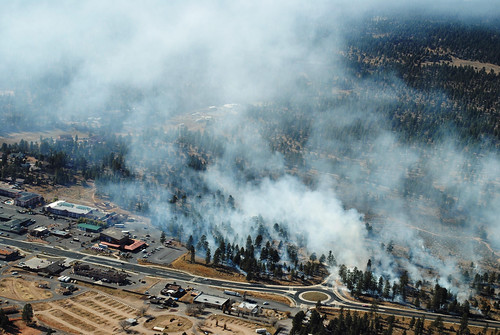
The loss of property and firefighters during wildfires are a reminder of the challenges we face in reducing the risks associated with large, unpredictable wildfires. Climate change, drought, insect infestations, changing land-use patterns, and other factors have contributed to increases in the complexity and in the numbers of wildfires across the United States.
Over the past four decades, some states such as Arizona and Idaho have seen the number of large fires burning each year more than triple. In many other western states, including California, Colorado, New Mexico, Nevada, and Wyoming, the number of large fires has doubled, according to a report by Climate Central. Average spring and summer temperatures across 11 Western states have increased by more than 1.5 degrees Fahrenheit, contributing to higher wildfire risks. In Arizona, spring temperatures have warmed faster than any other state in the U.S., rising nearly 1 degree per decade since 1970, which likely played a role in the increasing number of fires in the state.
The U.S. Forest Service and the U.S. Department of Interior are responding in part to these real, visible trends by implementing the National Cohesive Wildland Fire Management Strategy. The strategy was developed in conjunction with hundreds of stakeholders across all jurisdictions in response to the Federal Land Assistance, Management, and Enhancement Act (FLAME) passed by Congress in 2009.
The strategy identifies the greatest challenges and outlines available opportunities to create resilient landscapes, prevent the loss of lives and property, and respond to wildfires. Although we successfully suppress nearly 98 percent of unwanted wildfires, there is still much work to be done to mitigate the risks posed by the growing number and size of fires. The Cohesive Strategy provides federal, local, and state governments, tribes, and organizations with improved planning and implementation tools for wildland fire management and landscape restoration activities.
The strategy has three goals: to maintain and restore resilient landscapes; create fire-adapted communities; and effectively respond to wildfires. To reach these goals, the Forest Service has used prescribed, or planned, fire and other treatments to reduce hazardous vegetation. In fiscal year 2012, we completed more than 1.2 million acres of prescribed fires and more than 662,000 acres of mechanical treatments.
In addition, to reach the second goal of the Strategy, the California Wildfire Coordinating Group, in collaboration with the Forest Service and many other stakeholders, launched a statewide, interagency wildfire prevention campaign One Less Spark, One Less Wildfire. In response to a rapidly worsening 2013 wildfire season, the campaign based its actions on predicted changes in wildfire threat. Resources were pooled together and utilized to address these rising threats and inform communities throughout the year.
In this time of shrinking resources and rising numbers of wildfires, we will continue to work with our partners and stakeholders to address challenges and meet the goals of the Cohesive Strategy.
